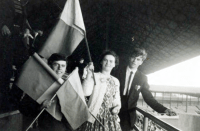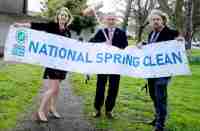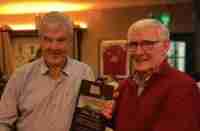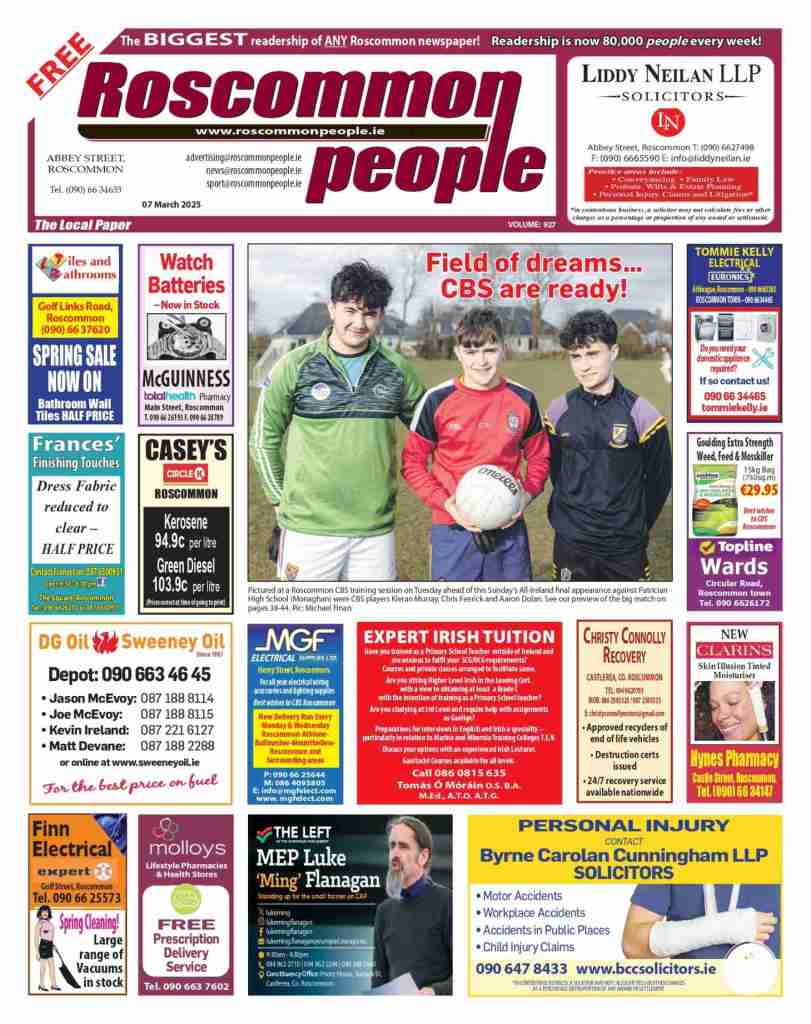George N Geraghty
Before his death in 1953, George N. Geraghty wrote extensively about his memories of life in Roscommon Town (and environs) in the early years of the 20th century…the Roscommon People is pleased to serialise these fascinating memories
School days
The Ballroom was used as a Boys School for a good many years. Prior to this the boys school was situated at the end of McDonnell’s Lane, (also known as Chapel Lane) in the ruins of the old Catholic Chapel. This was built in the Penal Days; it was built there because the people could not get any other site in the town.
The boys were removed from Chapel Lane to the Ballroom and from the Ballroom to the then new National Schools at the end of P.C. Mitchell’s yard.
I attended this school and my physical recollections of it are anything but cheerful. We had no steam-rolled roads in those days. The approach to the school from the Market Square in wintertime was covered with mud and the schoolroom inside was like a big barn. There were three open fireplaces along one side wall. Some days you might see a few sods of turf for a fire, and as for sanitary arrangements, they were as bad as could be – no water to flush and a rotten outlet to a filthy cesspool. Whoever was responsible for selecting the site had something to account for.
Mr Thomas Larkin was then principal teacher. He has long since retired. And those of us who knew what conditions he had to contend with often wonder how he managed to turn out so many brilliant students, who in after years occupied some of the best positions in the ecclesiastical, professional and commercial world. ‘Tom’ Larkin is still in good health, and good luck to him! I hope the boys attending the C.B. Schools will appreciate the comfort they are afforded in the present lovely schools.
Harrison
Memorial Hall
The Harrison Hall was formerly Roscommon’s Court House. When the present Court House was built the parish priest got possession of the old Court House and it became the parish church and so it remained a church, until the late Monsignor McLoughlin conceived the idea of building a new church. Those who knew Monsignor McLoughlin with his big heart and his big mind were not surprised when they heard that the plans for a splendid church were prepared. At first the people were asking why such a big church for Roscommon and where will the money come from to pay for the building? Well the Church was built and the money was found to pay for the building of it. But Roscommon people must never forget that the late Dean Cummins was responsible for collecting most of the money. He travelled North and South America, England, Wales and Scotland, and he never gave up this hard task until it could be said that he had accomplished what his former parish priest Monsignor McLoughlin set (out) to do for the people of Roscommon – that was to build and adorn a church which is one of the finest in Ireland. When the Blessed Sacrament was transferred to the new church the work of removing the remains of two priests (Rev. Fr. Madden, P.P. and Rev. Dr. Phillips, P.P.) was started. They were buried in front of the high altar and are now interred under the grotto at the back of the new church. The bell was then taken down from the old belfry and it now rings out the time from the clock in the tower of the new church. Some short time after, the stone cross that surmounted the dome of the old belfry fell on to the roof of the old church; it got held in the rafters and it is now set over the crown of the arch of the grotto at the entrance of the new church. The high altar, which was a timber structure, was taken to Ballyleague (Lanesboro) Church.
The older people of Roscommon will tell you what a difference there is in the town now compared with fifty years ago. Today the town is clean and bright looking. The new buildings are up to date and it can compare well with any other Irish town of its size. Now to my mind this change for the better was brought about through the building of the new church. The shadow of its splendid spire could no longer be cast down on lowly thatched cabins. Something had to be done to bring the streets into keeping with the lovely church and so we have today a very clean town reflecting a glorious House of God.
The same influence did its good work on the population of the town. As witness the congregations attending the devotions in the church, all well dressed and notice in the absence of crime in and around the town – all in strong contrast with the Roscommon of half a century ago.
Water Supply
The laying of water supply to the town fulfilled a great need. Heretofore the people had to depend on the town pumps. There were several pumps, one before and one behind the Harrison Hall; one at the end of Henry St., one in J. Caulfield’s yard, one in Luke Hayden’s yard, one in each of the old jails, one at the back of Jack Naughton’s and several others. Most of them went dry in summer, so donkey carts and barrels were used to bring the water from Carrowroe well and ‘Mike’ Monahan’s well. The members of the Old ‘Board of Guardians’ had many heated debates at their meetings before it was decided to proceed with the lying of the water supply and some very hard-fought elections took place over the same work.
(Series continues in coming weeks






